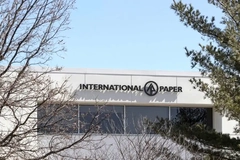Recycled plastic prices soar as rival industries dip into beverage producer’s supply

20 Jan 2022 --- Recycled plastic prices are skyrocketing worldwide as industries fight for control over the market to boost their environmental sustainability credentials. The packaging industry has been hard hit, with the cost of recycled PET (rPET) rising 103% in the past year, according to data group ICIS.
Last week, the price of rPET overtook that of virgin plastic in Europe despite additional collection and processing costs as well as soaring fossil fuel prices, ICIS found. With the cost of post-consumer PET flakes now reaching €1,690 (US$1,916) per metric ton, PackagingInsights speaks to experts about the causes and potential impacts of this price hike for circular economy ambitions.
Nicholas Hodac, director-general of UNESDA Soft Drinks Europe, says the boom in pledges by major beverage manufacturers (like Coca-Cola, PepsiCo and Danone) to increase the recycled content in their bottles over the next decade has driven up demand at an unprecedented rate.
Meanwhile, he explains that the recycling industry is not yet equipped to produce the needed quantities and is desperately awaiting legislative easing and improved waste collection systems.
Exponential cross-industry demand
Hodac notes there has been an exponential surge in demand for recycled plastics not only in the packaging industry but also in other sectors like fashion.
This surge is driven by legislative changes like the EU’s Single Use Plastic Directive and other forms of plastic tax such as the impending UK Plastic Packaging Tax, which will see a £200 (US$264) per ton tax rate for plastic packaging with less than 30% recycled plastic produced or imported into the UK from April 2022. The UK’s tax is estimated to impact roughly 20,000 producers in the country.
.jpg) PET bottle producers should have priority access to the plastic they send for recycling, argues UNESDA.On top of this looming regulatory pressure, many companies are voluntarily committing to slash their use of virgin materials well beyond that stipulated by legislation to reassure eco-conscious consumers. Notably, UNESDA last year laid out its “Circular Packaging Vision 2030,” pledging 100% recyclable packaging and 50% rPET bottles by 2025, as well as 100% rPET by 2030.
PET bottle producers should have priority access to the plastic they send for recycling, argues UNESDA.On top of this looming regulatory pressure, many companies are voluntarily committing to slash their use of virgin materials well beyond that stipulated by legislation to reassure eco-conscious consumers. Notably, UNESDA last year laid out its “Circular Packaging Vision 2030,” pledging 100% recyclable packaging and 50% rPET bottles by 2025, as well as 100% rPET by 2030.
“The issue is we also see that rPET is a very well-received material in other categories like the textile industry, automotive industry and toy industry,” says Hodac. “They want to drive circularity but have a much more limited access to their own materials.”
Not reaping what you sow
Packagers are now burdened with booming prices, says Hodac, despite having a far higher level of circularity within their industry. Deposit return schemes (DRS) provide a large quantity of rPET to the market. Still, with companies like Lego and Nike also purchasing the material openly, beverage manufacturers are not getting back the material they put in for recycling.
“The demand has increased significantly, and supply hasn’t caught up for these reasons,” explains Hodac.
Additionally, much of what is recycled ends up being exported to foreign markets, Robbie Staniforth, director of innovation and policy at producer compliance scheme Ecosurety, explains to PackagingInsights.
“There is a global market for certain plastic materials, which means much of the high-quality material goes abroad. There also remain technical challenges in collecting and sorting other types of plastic, often due to the varying polymer types and different layers used within one packaging item. There has been positive progress but not on the industrial scale required to keep pace with demand.”
Legislative hurdles
On top of market competition between industries, Hodac says the EU faces serious legislative issues in equipping the market with The fashion industry relies on rPET, but doesn’t contribute to its supply in equal proportion. necessary recycling infrastructure.
The fashion industry relies on rPET, but doesn’t contribute to its supply in equal proportion. necessary recycling infrastructure.
Every recycling facility must receive approval from the European Food Standards Authority (EFSA) before producing packaging like rPET bottles for food contact. Even if using standardized technology, and even if in the same facility, the EFSA must examine and approve each production line piece by piece. This process takes six to 18 months to complete.
Once approved, the European Commission (EC) must then give a stamp of approval. However, the EC is still sitting on over 200 EFSA approved applications. “These are recyclers that have built factories and are ready to produce but cannot start because they are waiting for EC authorization.”
“So despite demand rising for a good reason, supply is still lagging due to a lack of legislative action by the EC,” Hodac continues.
Why the EC is taking so long to act on the issue remains in question, says Hodac, but new legislation titled the “Recycled Plastics Regulation” is in the works for this year to accelerate these processes.
Demand for intervention
While industry’s ambitious recycling targets appear under severe threat, Hodac says policymakers can make two urgent and fundamental changes to ensure packaging players hit their goals over the next decade.
First, the expansion of DRS throughout the EU to raise the rate of available materials for recycling. Currently, only around nine nations in the bloc have functional DRS – this needs to be massively expanded to every nation, Hodac stresses. “We need the EC to introduce minimum requirements for these schemes so that it is actually efficient.”
Second, each industry must seek to circularize its own material usage. “While we welcome the success of our recycled bottles, we are the ones who have set mandatory targets, and we should have priority access to these bottles once they come out of the collection scheme.”
Every producer should be able to recuperate the same quantity of plastic material they put into the market, argues Hodac. “We can then decide whether we need it for our own recycled material and if not, then we can sell it into the free market to other sectors like the textile or toy industry.”  The automotive industry is also sharing in the rPET spoils. Last year, Carbios partnered with Michelin to produce car tires from waste PET bottles.
The automotive industry is also sharing in the rPET spoils. Last year, Carbios partnered with Michelin to produce car tires from waste PET bottles.
“This [strategy] is the only way we can define circularity,” he says. “At the moment, other sectors are simply taking our materials without investing in the collection.”
Currently, roughly 30% of rPET on the market is used by the beverage industry, despite producing over 70% of the material. “The EC has to intervene here,” concludes Hodac.
The price of fashion
One of the key industries sapping rPET from the market and restricting access to packagers is the fashion industry. A report by the Changing Markets Foundation last year found that recycled polyester, made from PET bottles, is the principal way fashion brands plan to curb their fossil fuel footprint.
The majority of companies (85%) in the report indicated they aim to achieve their recycling targets by using downcycled PET bottles.
In contrast, none of the brands reported high levels of fiber-to-fiber recycling targets, nor a clear goal to move toward this type of recycling. Neither are companies making the necessary investments to ensure a future in which clothes can be recycled back to clothes, states the report.
By Louis Gore-Langton











